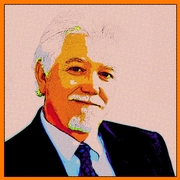School Report: Flexing the Plan
By John Henry Ledwith | April 9 2015
National Sales Manager, ETR
I never cease to be amazed at the skill and art of fine teaching. Here’s a story I heard last week from a high school teacher I know.
Students were coming into her classroom at the beginning of the period. Two young men started talking about a fight that occurred the night before between a couple of their peers. They took different sides on the fight.
Their talk was assertive, then challenging, then trash. Racial epithets were tossed back and forth. Other students started joining in and the entire situation was escalating.
Choose Your Own Adventure
And then what happened? I know that nine times out of ten, this teacher would be on the incident immediately, with swift and strict enforcement of school rules. She’d call the school resource officer. The two altercating students would be escorted out of the class. The teacher would take charge, restore order and move on with her teaching plan.
But this time, in this class, with these students, she did something different. This was an educator working her artistry—the teachable moment, the improvisation, the flex. The risk she believed was worth it.
This happened to be a culinary skills class. The teacher used the resources and content she had at hand—the lesson plan and the emotions in her classroom at that moment—to change the course of the day.
She assigned students tasks. Food came out. Bowls came out. Vegetables were sliced and chopped and mixed and sautéed. Instead of focusing a discussion on nutrition and healthy food preparation, she encouraged the students to keep talking about what had happened in their class. She guided the discussion—keeping it civil, asking them to reflect on their own experiences, keeping everyone involved.
By the time the students sat down to share their meal together, they were guiding the discussion themselves. Her skillful facilitation led them into conversations where they discovered and affirmed mutually agreed-upon norms about respect, conflict resolution, maturity and staying out of trouble.
Planning Makes a Difference
It’s important to stay current on curricular content and to lay out a planned course of study. This is how teachers attain the outcomes they’ve set—and are required to meet—for the year.
But my friend’s story reminds me of how equally important it is in Health Education to check in with your students, listen, and sometimes set the day’s lesson plan aside. Students spend over 1,000 hours in American classrooms every year. Educators are often at the front line of crisis, discovery, joy, loss and changing adolescent lives.
The best ideas around shaping healthy behavior and building student engagement don’t always have to come from a science-based lesson plan. But they do come from our soundest ideas about what works to authentically reach students.
I firmly believe that putting an effectively sequenced health education curriculum into practice—following the plan most of the time—is essential. It gives students the foundation they need to apply skills about communication, making healthy choices, supporting friends and seeking appropriate help in all kinds of areas.
For teachers, sometimes helping students make good choices about values and relationships means going off the book—even if it’s the best of plans.
John Henry Ledwith is ETR’s National Sales Manager. He can be reached at jhl@etr.org. You can also find him on LinkedIn and follow him on Twitter @JohnHenry56.





